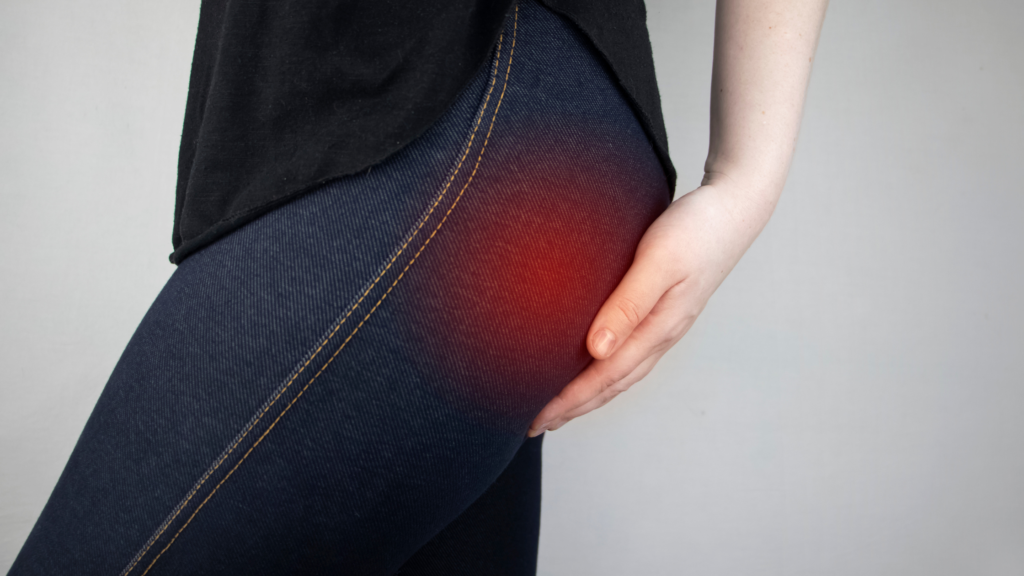The question of whether low back disc bulges and protrusions cause hip pain is more complex than it seems. The answer can be both “yes” and “no,” depending on how we define the term “hip.” From a technical and anatomical perspective, spine disc abnormalities cannot directly cause pain in the hip joint itself. However, in practical terms, people often describe pain in areas affected by spine issues as “hip pain.” Understanding this distinction is crucial for proper diagnosis and treatment.
Understanding the Anatomy of the Hip Joint
The hip joint is one of the largest and most important joints in the body. It is a ball-and-socket joint, meaning it allows a wide range of motion in multiple directions. The ball is the head of the femur (thigh bone), and the socket is a part of the pelvis called the acetabulum. This joint is located deep in the front of the pelvis, near the groin area. Strong ligaments, muscles, and a layer of cartilage work together to stabilize the joint and enable smooth movement.
When something goes wrong with the hip joint, the pain is usually felt in the groin or the front of the thigh. For instance, arthritis in the hip joint or a labral tear (damage to the cartilage around the socket) often causes pain in these areas. This is because the hip joint sends its pain signals to the groin region, which is anatomically linked to the front of the pelvis.
Low Back Disc Bulges and Protrusions
The lumbar spine, or lower back, consists of vertebrae (bones), intervertebral discs (cushions between the bones), nerves, and other supporting structures. Intervertebral discs act as shock absorbers, but they can become damaged due to injury, aging, or other conditions. When a disc bulges or protrudes, it can cause pain to radiate, or “refer,” to areas outside the spine. Unlike hip joint pain, referred pain from the lumbar spine is often felt in the buttock, the back of the thigh, or sometimes down the leg.
The Confusion Between Hip and Back Pain
Many people use the term “hip pain” to describe discomfort they feel in areas near the hip joint, such as the buttock, side of the thigh, or lower back. However, from a medical standpoint, true hip joint pain is typically felt in the groin area, not the back or buttock. This discrepancy can make it challenging to pinpoint the source of pain.
A person experiencing referred pain from a lumbar disc issue may mistakenly think the problem lies in their hip. Similarly, someone with an actual hip joint problem might describe it as lower back pain. These overlaps in symptoms highlight the importance of understanding where pain originates.
Why This Distinction Matters
This distinction has practical importance because misinterpreting the source of pain can lead to delayed or incorrect treatment. For example, someone experiencing referred pain from a lumbar disc bulge might seek help from an orthopedic specialist, thinking they have a hip joint problem. Meanwhile, the real issue lies in their spine and might be better addressed by a non-surgical spine specialist.
Conversely, a person with true hip joint pain might undergo unnecessary imaging or procedures for their lower back if the source of the pain isn’t correctly identified. Proper diagnosis involves a combination of medical history, physical exams, and imaging studies like X-rays or MRIs to determine whether the pain comes from the hip joint, the lumbar spine, or another source entirely.
Diagnosing and Treating Pain
Doctors use specific tests to distinguish between hip joint pain and referred pain from the lower back. For example, they might move the leg in certain ways to see if it reproduces the pain, which can indicate a hip joint issue. Imaging studies can also help. An X-ray of the hip can reveal arthritis or structural problems, while an MRI of the spine can show disc protrusions and disc bulges.
Treatment depends on the underlying cause. For true hip joint problems like arthritis, options include physical therapy, anti-inflammatory medications, or, in severe cases, hip joint replacement surgery. For referred pain from the lumbar spine, treatments might involve rest, exercises to strengthen the back, pain relief medications. The new non-surgical option for Discseel is a very viable option for lumbar disc protrusions and disc bulges for people who want to avoid spine surgery.
Can Bulging Discs and Disc Protrusions Cause Hip Pain?
So, do low back disc bulges and protrusions cause hip pain? The answer depends on what we mean by “hip.” Spine disc issues do not cause pain in the hip joint itself but can refer pain to areas people often describe as their hip, such as the buttock or side of the thigh. Understanding this distinction is essential for getting the right diagnosis and treatment. If you’re experiencing pain in or around your hip girdle, consulting a healthcare professional is the best step to determine its true source.

